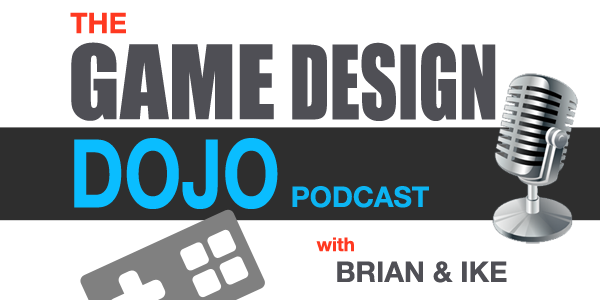
On this episode of Game Design Dojo, Brian and Ike discuss ways to capture the best screenshots for your marketing channels, and may also help guide your game’s production.
It’s GDC (Game Developer’s Conference) week and we recommend that anyone who has the opportunity to go should most definitely go. Brian will be speaking at the Unity and Qualcomm booths. It is such an honor and really exciting! Check for updates on our facebook page for more details about GDC.
Screenshots
A screenshot should be how you visualize what your game should look like. It can be challenging to capture the essence of your game with just a screenshot. Do keep in mind a picture is worth a thousand words and at a glance someone needs to “get it”.
3 Key Elements for Screenshots:
- Does it have a clear action
- Can you see a puzzle
- Is there a clear theme
Screenshots at a glance – What are they looking for?
A good analogy is the back of the box. Remember back to console games when you would look at the back of the box to see what the game was all about. The front cover would usually be very enticing and the back would have a small screenshot of the game. Blizzard executed this well.
When looking at a screenshot, the player should have a clear understanding in a nanosecond of what the game is about and what they’re supposed to do. One suggestion is while working on your game, take screenshots regularly, look at them, scale them down to a thumbnail, then look at the primary elements in that frame and decide if those elements come across in a clear way.
Some things to consider with your screenshots:
- Needs to be some sort of an action – all games have action
- Working in 3’s is always a good idea
- Be careful with effects like fake motion trails because you can potentially mislead the player
- Have to be honest
- Using text isn’t always a good idea
- Video clips should be secondary
Generally, the progression of the consumer is first they look at the icon, if that looks interesting then they go to the page, if the screenshots look good and there’s a video, then they’ll watch the video. There is an increase in time commitment from one step to the next and people typically don’t go straight to the video, which is why video clips are secondary to the screenshots.
The Conflict – What am I up Against?
Puzzle and action work similarly. A puzzle has a clear indication like a jigsaw puzzle and is relevant in game design elements. With puzzles, it’s not obvious how you’re going to solve it, you just know you can solve it. You know you have the ability to solve it and feel like you can. This is an important feeling in video games to think you can win and at a glance say, “Hey, I can do that.”
Another way to look at it is think of the cruise ship brochure for excursions. They highlight the end result like scuba diving and swimming with the dolphins, not the slow boring part of getting there. The same is true when putting together screenshots. Usually you have at least 5 screenshots. The first one is all encompassing and shows the very core of the core mechanics you have in your game. Then you expand on that from 2-4 with number 5 being a wildcard.
Some more things to consider:
- Capture the ‘wow moment’
- Give a little hint of something totally new
- Show what the action is and the progress of where they are with some sort of a puzzle
- Have key elements to fit your demographic
- Start showing screenshots to people for feedback and make adjustments
- The sooner you start taking screenshots of your game, the sooner it starts coming together visually
Have a Clear Theme
You want the theme to transcend through all elements of your game. Theme parks are so interesting because they create an atmosphere with the music, effects, sound, colors, graphics, locations, characters, buttons and so on. There is an encompassed theme that is consistent all the way through the entire experience. The best directors in Hollywood are masters of theme.
Find a way for your environment to have a strong theme. Star Wars for example, always gave you the feeling that you were part of a bigger story. No matter how small your game is, you can take that lesson. Hinting to a world that is deeper than the one you can show and create a depth for the player.
Listen now to Game Design Dojo Episode #010
